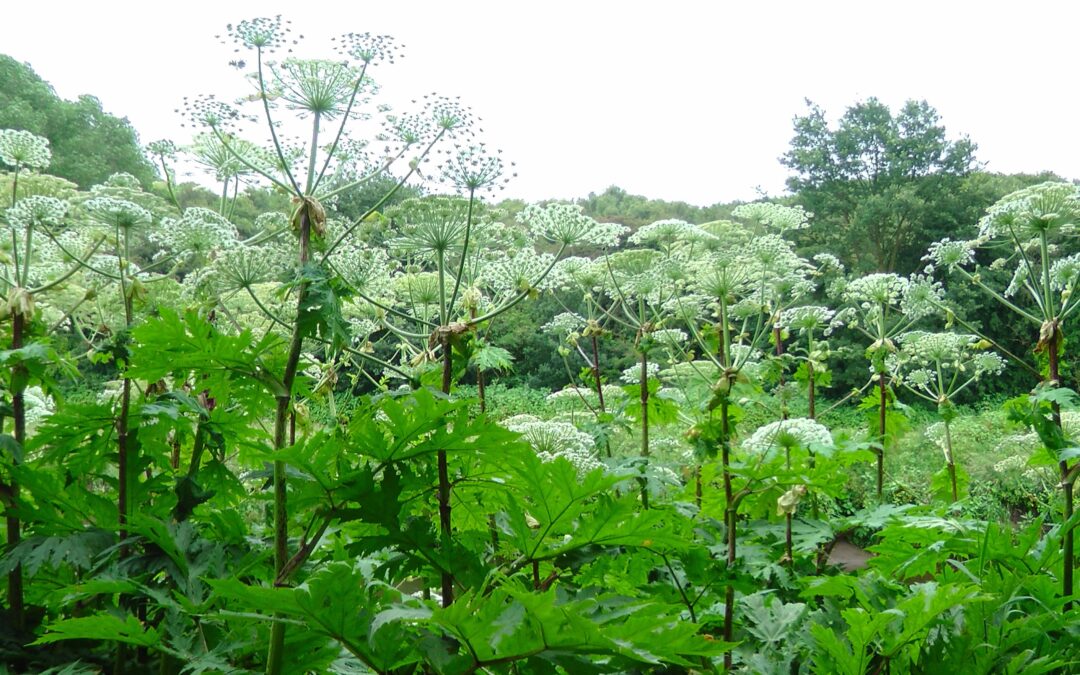why is giant hogweed so dangerous?
Giant hogweed is dangerous:
because it contains toxic sap that can cause severe skin and eye irritation, painful blistering, and even blindness. The sap can also increase the skin’s sensitivity to UV radiation, making the affected areas more susceptible to sunburn and long-term damage. It is important to avoid coming into contact with the sap and to seek medical attention if contact occurs.
Giant hogweed
is a highly invasive plant that can grow up to 14 feet tall. It is native to Central Asia but has been introduced to many other parts of the world, including Europe and North America. The plant is characterized by its large, white, umbrella-shaped flowers and large, coarse leaves.
The sap of giant hogweed contains a compound called furanocoumarins, which are photosensitizing agents. This means that when the sap comes into contact with the skin and is then exposed to sunlight, it causes a severe skin reaction. Symptoms can include:
- Redness and itching at the point of contact
- Blisters, which can be painful and can lead to scarring
- Swelling of the affected area
- Increased sensitivity to UV radiation, making the affected area more susceptible to sunburn and long-term damage.
In addition to the skin reactions, coming into contact with the sap can cause eye irritation, and even blindness if the sap comes into contact with the eyes.
It is important to avoid coming into contact with giant hogweed and to wear protective clothing and gloves if you must work with the plant. If contact does occur, it is important to wash the affected area with soap and water immediately and to avoid sunlight on the affected area for at least 48 hours. If severe symptoms occur, it is important to seek medical attention.
The Hospital may offer the following:
- Pain Relief: If you’re experiencing pain, over-the-counter pain relievers like ibuprofen can help manage discomfort.
- Medical Treatment: In some cases, if the reaction is very severe, a medical professional might prescribe topical or oral corticosteroids to reduce inflammation and pain.
- Prevent Infection: If blisters develop, it’s important to keep them clean and dry to prevent infection. Your doctor might recommend an antibiotic ointment.
Remember that the severity of the reaction can vary from person to person, and while most cases can be managed with home care and over-the-counter treatments, it’s important to consult a medical professional if you have concerns or if your symptoms are severe or worsening. If you’re uncertain about how to proceed, seeking medical advice is always a good choice.
